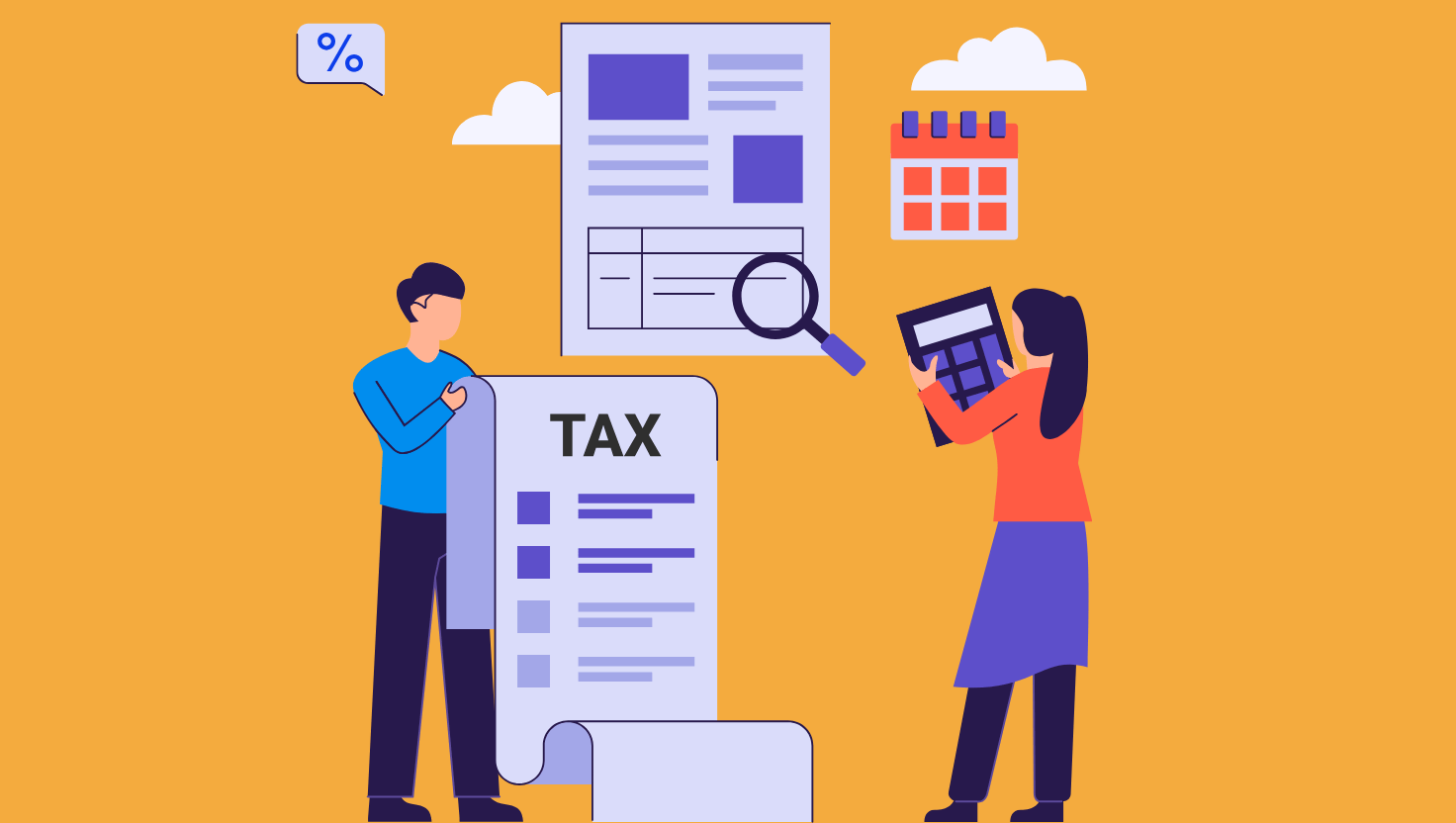
” Learn how Section 80EEA can help you save on taxes when transferring a home loan. Discover eligibility criteria, tax benefits, and tips to maximize savings while managing your home loan effectively. Make informed financial decisions today! “
When it comes to purchasing a home in India, the tax benefits related to home loans can significantly alleviate the financial burden for many individuals. One of the notable sections of the Income Tax Act, 1961, is Section 80EEA, which provides extra deductions on interest paid on home loans. For homeowners considering the transfer of their home loan to a different lender, it raises an important question: Can I claim Section 80EEA after transferring my home loan? In this blog post, we will dive deep into this query while also breaking down crucial elements of Section 80EEA and the implications of transferring a home loan.
What is Section 80EEA?
Before we tackle the specific question, let’s take a closer look at Section 80EEA. This section was introduced in the Budget of 2019 and aims to give relief to first-time homebuyers. Here’s what you need to know about the applicable provisions:
- Deduction Limit: Under Section 80EEA, a taxpayer can claim a deduction of up to ₹1.5 lakh on the interest paid for a home loan. This is extra to the ₹2 lakh deduction available under Section 24(b) for interest on housing loans, making a total possible deduction of ₹3.5 lakh in a financial year for eligible homebuyers.
- Eligibility Criteria: To be eligible for the benefits under Section 80EEA, you must be a first-time homebuyer and the loan must be taken from a financial institution or a bank. The property must be a residential one, and it should not exceed ₹45 lakh in value.
- Date of Loan Approval: It’s vital that the loan is sanctioned between April 1, 2019, and March 31, 2020.
What Happens When You Transfer a Home Loan?
Transferring a home loan refers to the process of moving your existing home loan from one lender to another, often in pursuit of lower interest rates, better terms, or improved customer service. While this can result in significant savings over the life of the loan, it does raise questions regarding tax benefits and eligibility for deductions such as Section 80EEA.
Implications of Loan Transfer on Section 80EEA Claims
When you transfer a home loan, the following considerations come into play regarding your eligibility for tax benefits under Section 80EEA:
- Loan Continuity: The most important factor to consider is that Section 80EEA pertains to the interest paid on the home loan. As long as the home loan remains intact and continues to be serviced, you can still claim the deductions. When you transfer your loan to another lender, you are essentially continuing the existing loan agreement but with a new lender, which does not affect your eligibility as long as the transfer occurs within the stipulated period.
- Interest Payments Post-Transfer: Once your home loan is transferred, you must continue paying interest on the outstanding loan amount. The deduction under Section 80EEA is applicable for interest payments made during the financial year, whether you are paying it to the old lender or the new one. Ensure that you obtain a tax statement or certificate from the new lender reflecting the interest paid so that you can claim the deduction accurately.
- First-Time Homebuyer Status: It is crucial to remember that the eligibility for Section 80EEA is contingent on being a first-time homebuyer. If you originally qualified as a first-time homebuyer when you took the loan but have since taken out additional loans for other properties, you may no longer meet this requirement. In this case, you would lose the ability to claim this deduction.
- Documentation: After transferring your loan, ensure that you retain all paperwork and documentation related to both the old and new loan accounts. This includes loan sanction letters, repayment schedules, and interest payment certificates. These documents will be essential when filing your tax returns and claiming deductions.
- Loan Transfer Process: Sometimes, the loan transfer can involve intermediary refinanced conditions, such as a switch in the original loan terms, balance transfer to a new loan product, or changes in tenure. While a simple loan transfer shouldn’t affect your deductions, if the original loan agreement is terminated and a new one is initiated, it’s crucial to ensure that the loan is still eligible for Section 80EEA.
Can I Claim 80EEA after Transferring My Home Loan?
Yes, you can still claim the deduction under Section 80EEA after transferring your home loan to a different bank, as long as the loan is for the same residential property and you continue to meet the conditions specified under Section 80EEA.
Here are the key conditions to keep in mind:
- Loan Sanction Period: The loan must have been sanctioned between April 1, 2019, and March 31, 2022.
- Property Value: The stamp duty value of the residential house property should not exceed ₹45 lakh.
- First-Time Buyer: You should not own any other residential house property as of the date of sanction of the loan.
Ensure you have proper documentation from both the original and the new banks regarding the loan transfer and the interest payments made
What are the other Conditions For Claiming 80EEA?
In addition to the conditions mentioned earlier, here are some other important points to consider for claiming the deduction under Section 80EEA:
- Loan Amount: The deduction is available on the interest paid on the home loan up to a maximum of ₹1.5 lakh per financial year.
- Additional Deduction: This deduction is over and above the ₹2 lakh limit available under Section 24(b) for interest on home loan for a self-occupied property.
- Residential Property: The property for which the loan is taken should be a residential house property. Commercial properties do not qualify for this deduction.
- No Other House Property: As of the date of sanction of the loan, the individual should not own any other residential house property.
- Individual Taxpayer: The deduction is available only to individual taxpayers and not to any other type of taxpayer like HUF, AOP, company, etc.
- Loan from Financial Institution: The loan must be taken from a financial institution or a housing finance company.
These conditions ensure that the benefit is targeted towards first-time homebuyers and encourages affordable housing. If you meet all these criteria, you can claim the deduction under Section 80EEA.
Can I claim both Section 24(b) and Section 80EEA deductions?
Yes, you can claim deductions under both Section 24(b) and Section 80EEA. Here’s how it works:
- Section 24(b): Allows you to claim a deduction of up to ₹2 lakh per financial year on the interest paid on a home loan for a self-occupied property.
- Section 80EEA: Provides an additional deduction of up to ₹1.5 lakh per financial year on the interest paid on a home loan, specifically for first-time homebuyers.
By claiming both deductions, you can maximize your tax benefits on the interest paid on your home loan. Just ensure you meet the eligibility criteria for both sections.
Comparison Between Section 24(b) and Section 80EEA:
Section 24(b)
- Purpose: Provides a deduction on the interest paid on home loans.
- Eligibility: Available for both self-occupied and let-out properties.
- Deduction Limit: Up to ₹2 lakh per financial year for self-occupied properties. For let-out properties, the entire interest amount is deductible.
- Loan Type: Applicable to home loans taken for purchase, construction, repair, renewal, or reconstruction of a property.
- Additional Conditions: The property must be acquired or constructed within 5 years from the end of the financial year in which the loan was taken.
Section 80EEA
- Purpose: Provides an additional deduction on the interest paid on home loans for first-time homebuyers.
- Eligibility: Only for individual taxpayers who do not own any other residential property at the time of loan sanction.
- Deduction Limit: Up to ₹1.5 lakh per financial year.
- Loan Type: Applicable to home loans taken for the purchase of a residential house property.
- Additional Conditions:
- The loan must be sanctioned between April 1, 2019, and March 31, 2022.
- The stamp duty value of the property should not exceed ₹45 lakh.
- The loan must be taken from a financial institution or a housing finance company.
Key Differences
- Deduction Limits: Section 24(b) allows up to ₹2 lakh for self-occupied properties, while Section 80EEA provides an additional ₹1.5 lakh.
- Eligibility: Section 24(b) is broader and includes both self-occupied and let-out properties, whereas Section 80EEA is specifically for first-time homebuyers.
- Loan Sanction Period: Section 80EEA has a specific loan sanction period (April 1, 2019, to March 31, 2022), which is not a requirement for Section 24(b).
- Property Value: Section 80EEA has a property value cap of ₹45 lakh, which is not applicable under Section 24(b).
By understanding these differences, you can better plan your tax-saving strategies and maximize your deductions.
Tax Filing and Claiming Deductions
When filing your income tax return for the relevant financial year, you will need to declare the total interest paid on your home loan from both the old and new lenders. Here’s a process you might follow:
- Collect Interest Certificates: Obtain interest certificates for the entire year from both lenders.
- Calculate Total Interest Paid: Add up the interest paid to both lenders during the financial year. If it exceeds ₹1.5 lakh, you will be able to claim the entire amount under Section 80EEA, assuming other conditions are satisfied.
- File the Return: Use the appropriate forms to file your return. Include the deductions properly under the respective sections, and ensure to maintain proof of the interest payments for any queries that might arise from the Income Tax Department.
Conclusion
In conclusion, claiming the benefits of Section 80EEA after transferring your home loan is quite feasible. As long as you continue to meet the eligibility criteria and ensure that your payments are consistently made, you can still enjoy the tax deductions associated with your home loan. It’s essential to stay updated with the latest amendments and guidelines provided by the Income Tax Department, and keep thorough records of all relevant documents to ensure a smooth claiming process.
As always, if you have specific concerns or need detailed advice tailored to your circumstances, consider consulting a financial advisor or tax professional. They can provide you with personalized insights that will help you navigate the complex landscape of home loans, tax deductions, and financial planning effectively.
Frequently Asked Question
- What is Section 80EEA?
- Section 80EEA provides an additional deduction of up to ₹1.5 lakh on interest paid on home loans for first-time homebuyers.
- Who is eligible to claim deductions under Section 80EEA?
- Individual taxpayers who have taken a home loan for a residential property and meet specific conditions can claim this deduction.
- What are the conditions to claim deductions under Section 80EEA?
- The loan must be sanctioned between April 1, 2019, and March 31, 2022, the property value should not exceed ₹45 lakh, and the taxpayer should not own any other residential property at the time of loan sanction.
- Can I claim Section 80EEA deduction if I transfer my home loan to another bank?
- Yes, you can claim the deduction as long as the loan is for the same property and you continue to meet the specified conditions.
- Is the deduction under Section 80EEA available for commercial properties?
- No, the deduction is only available for residential house properties.
- Can I claim both Section 24(b) and Section 80EEA deductions?
- Yes, you can claim both deductions. Section 80EEA provides an additional deduction over the ₹2 lakh limit under Section 24(b).
- What is the maximum deduction available under Section 80EEA?
- The maximum deduction available under Section 80EEA is ₹1.5 lakh per financial year.
- Are there any restrictions on the type of loan for claiming Section 80EEA?
- Yes, the loan must be taken from a financial institution or a housing finance company.
- Can HUFs or companies claim deductions under Section 80EEA?
- No, the deduction is available only to individual taxpayers.
- What documents are required to claim deductions under Section 80EEA?
- You need the loan sanction letter, interest certificate from the bank, and proof of property value to claim the deduction.
-

SBI Home Loans in 2025: Dream Home with Big Saving Rates Starting from 7.50% p.a.
-

Dream11, MPL, Rummy: Are Your Online Gaming Winnings Taxable in India?
-

Why Do Joint Accounts Fail in Income Tax? Top 7 Reasons Explained
-

Invest Smart in July 2025: Top Stocks to Boost Your Portfolio’s Growth











